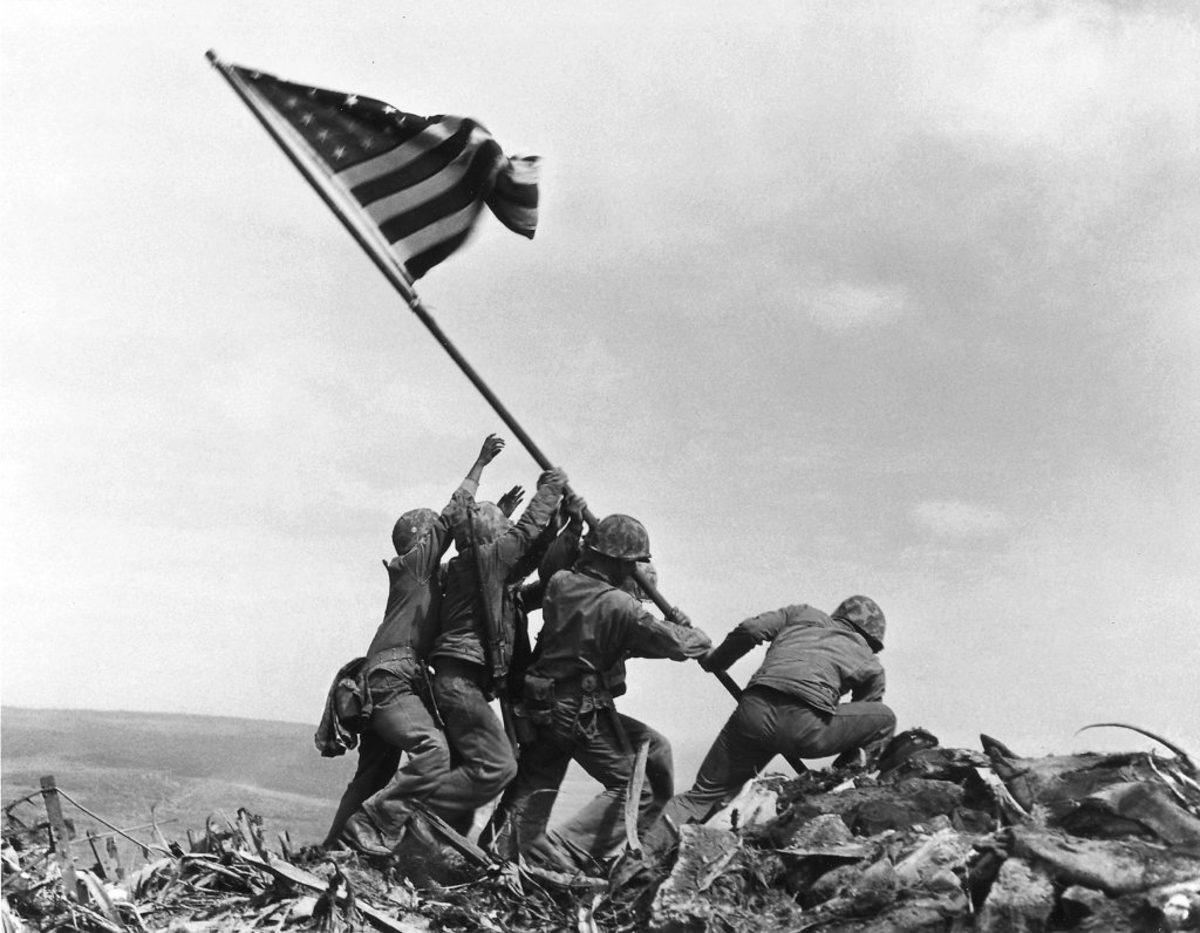
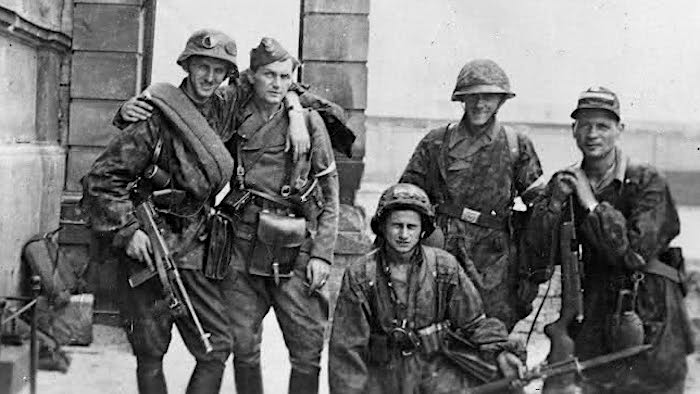
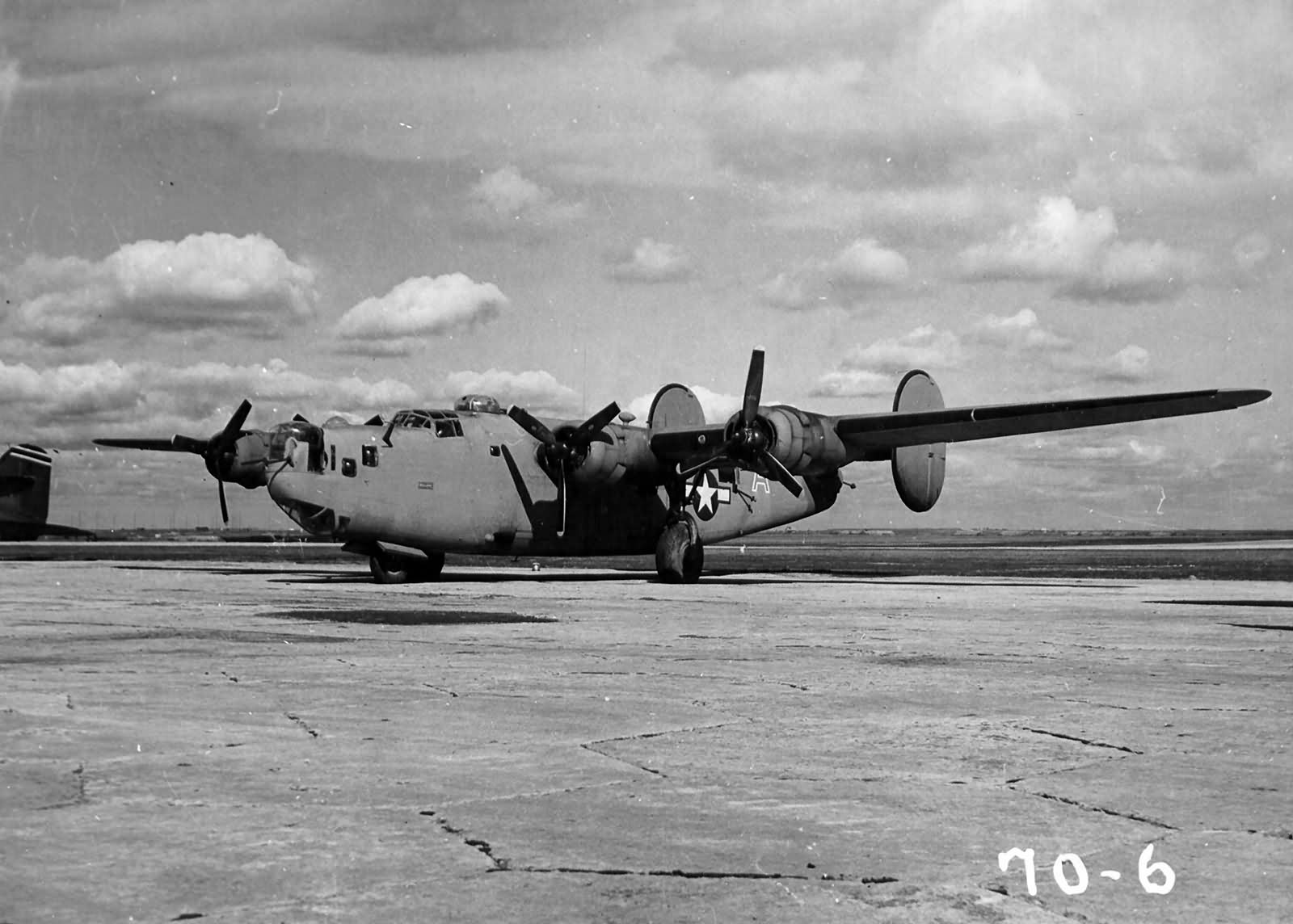
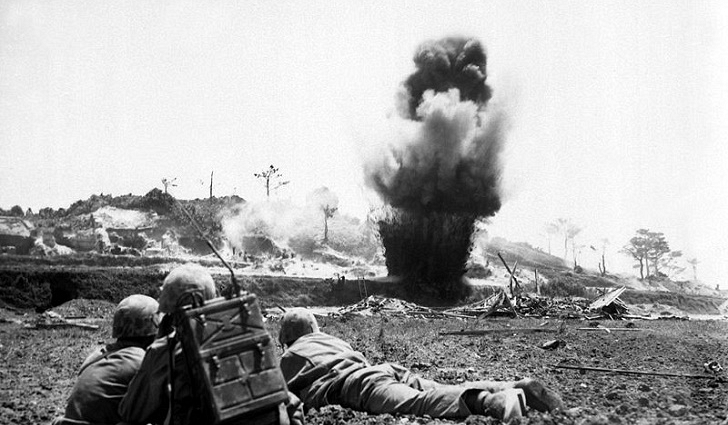
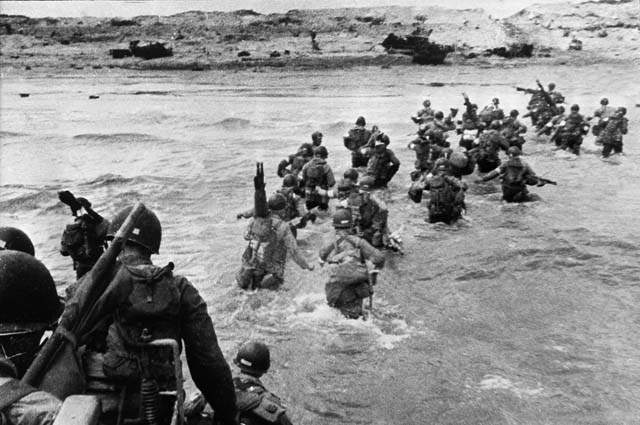

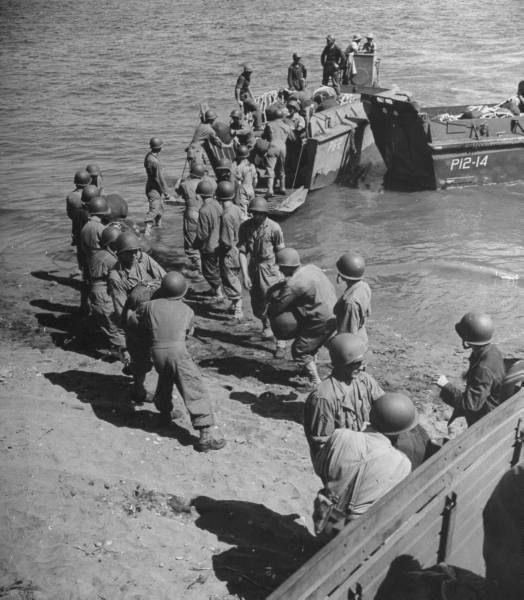
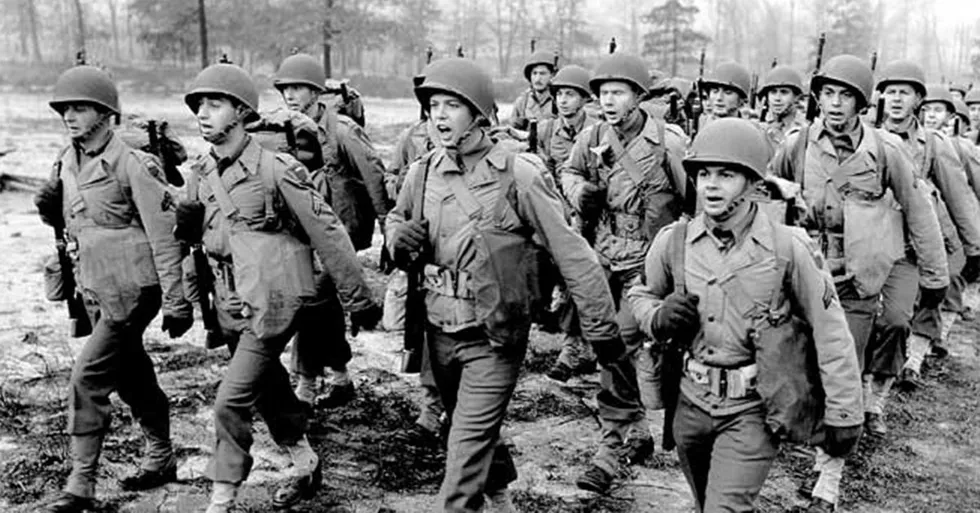
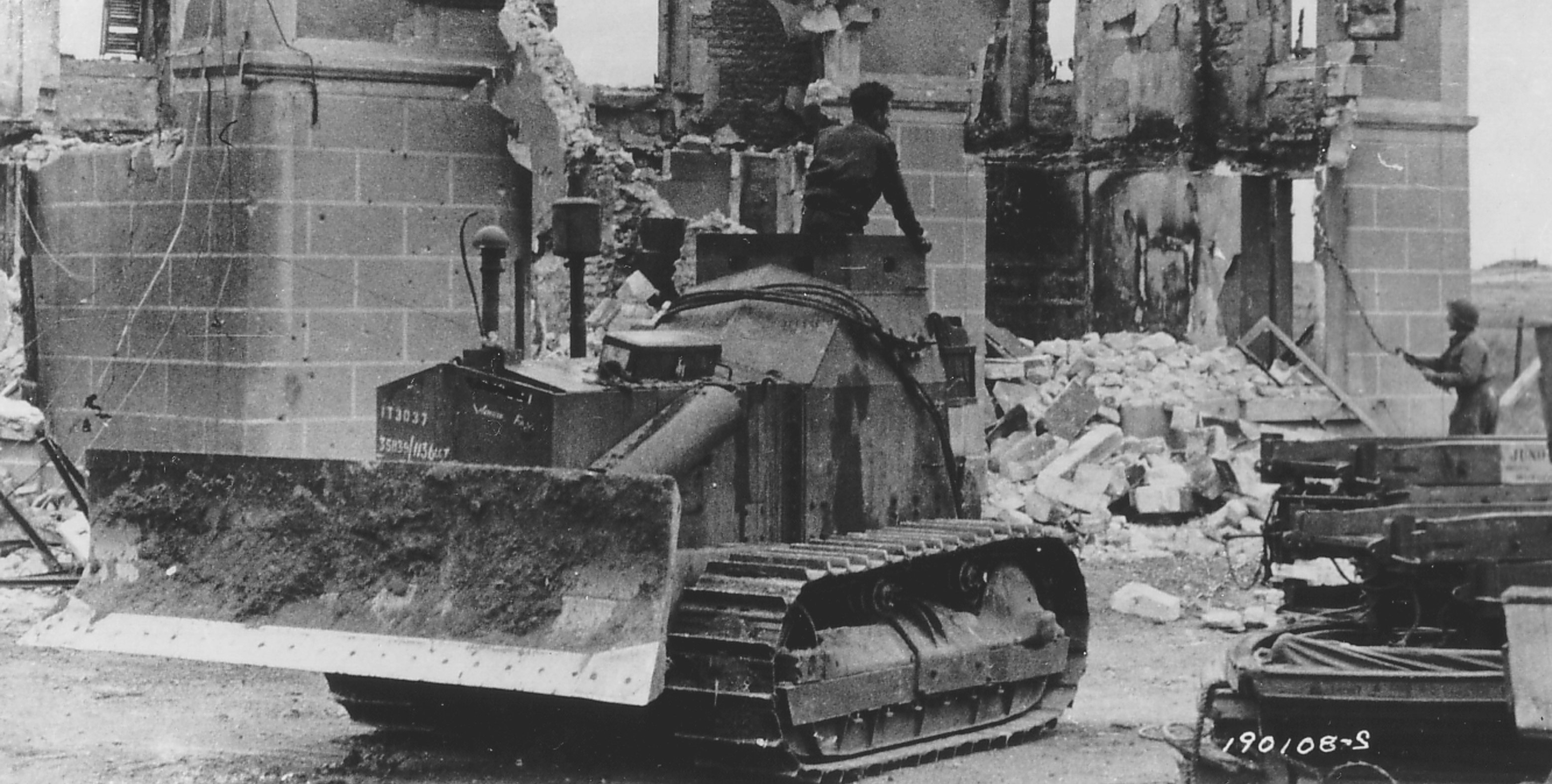
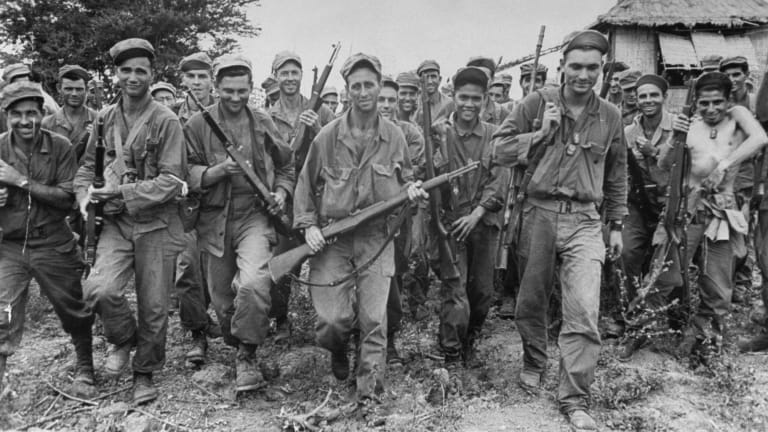
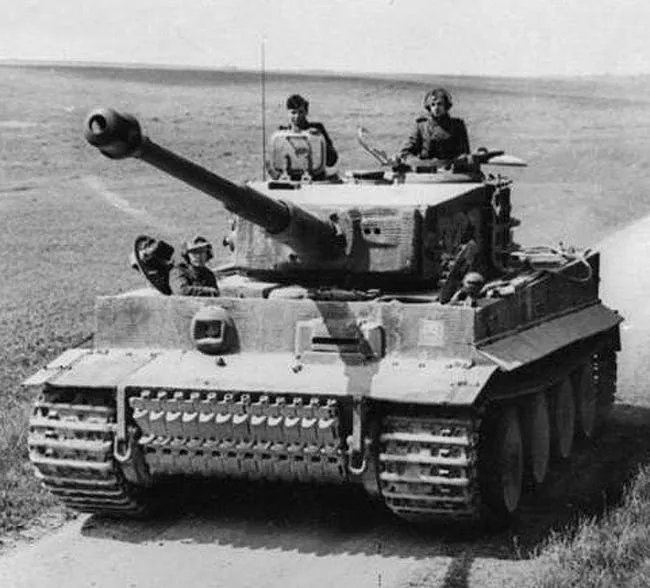
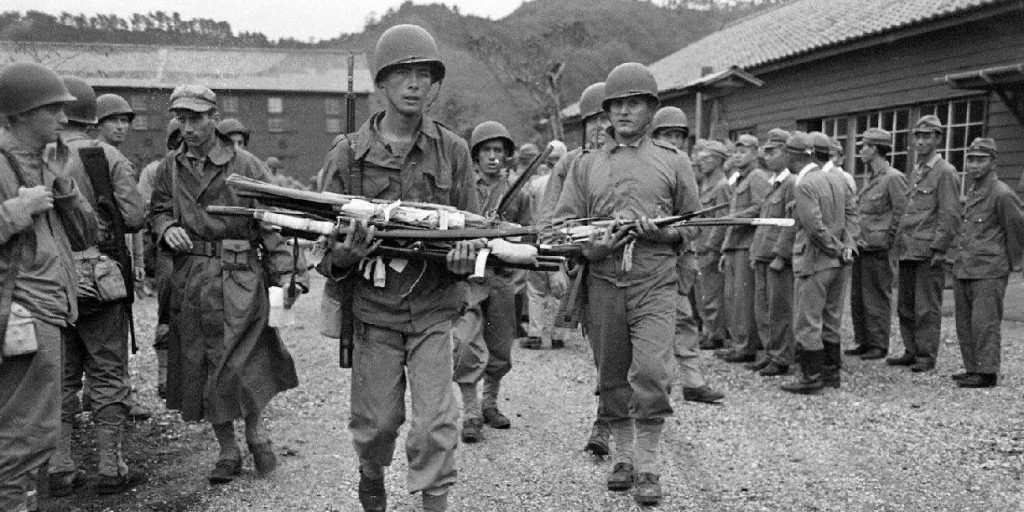
The M1 Garand was the standard United States service rifle during World War II. Although most M1 rifles were issued to U.S. forces, hundreds of thousands were provided as foreign aid to American allies. When the rifle was first introduced in 1937, a rifleman could fire thirty aimed rounds per minute and by using a peep sight, training to aim the rifle was much easier and was ideal for fast snap shooting.
Many vehicles were used by the major powers during WWII. Some of the American vehicles invovled in the war were bulldozers, halftracks, jeeps, and trucks. Bulldozers were very useful, they cleared paths and removed objects for other vehicles during invasions and they were used to construct roads and advanced airfields. Although bulldozers were extremely useful, only four were allowed per U.S infantry division and they rarely made it onto land in order to be helpful. Only three out of sixteen bulldozers made it to land at Omaha Beach.
The USS Enterprise (also known as The Big E) was the sixth aircraft carrier of the US Navy. This Yorktown class aircraft carrier was launched in 1936 and was one of only three American carriers commissioned before World War that survived the entire war. Built by Newport News Shipbuilding, she participated in more actions of war against Japan than any other United States ship. During the attack on Pearl Harbor she was the only aircraft with men aboard and 18 dive bombers of her Air Group were able to arrive over the harbor. The USS Enterprise became the most decorated United States ship of World War II by earning 20 battle stars. She was also the first American ship to sink a full size enemy warship after her aircraft sank the Japanese submarine I-70.
The B-24, created by Consolidated Aircraft was a long range heavy bomber that could reach almost 300 miles per hour and carry up to a 5,000 pound bomb payload for 1,700 miles. During the war, B-24s participated in many operations including D-Day. A year before D-Day during Operation Carpetbagger, some Liberators were painted black and flown during the night to deliver supplies to French Resistance fights in order to support the D-Day invasion. On the day of the invasion, Liberators were behind enemy lines softening Nazi positions before ground forces made landfall.











